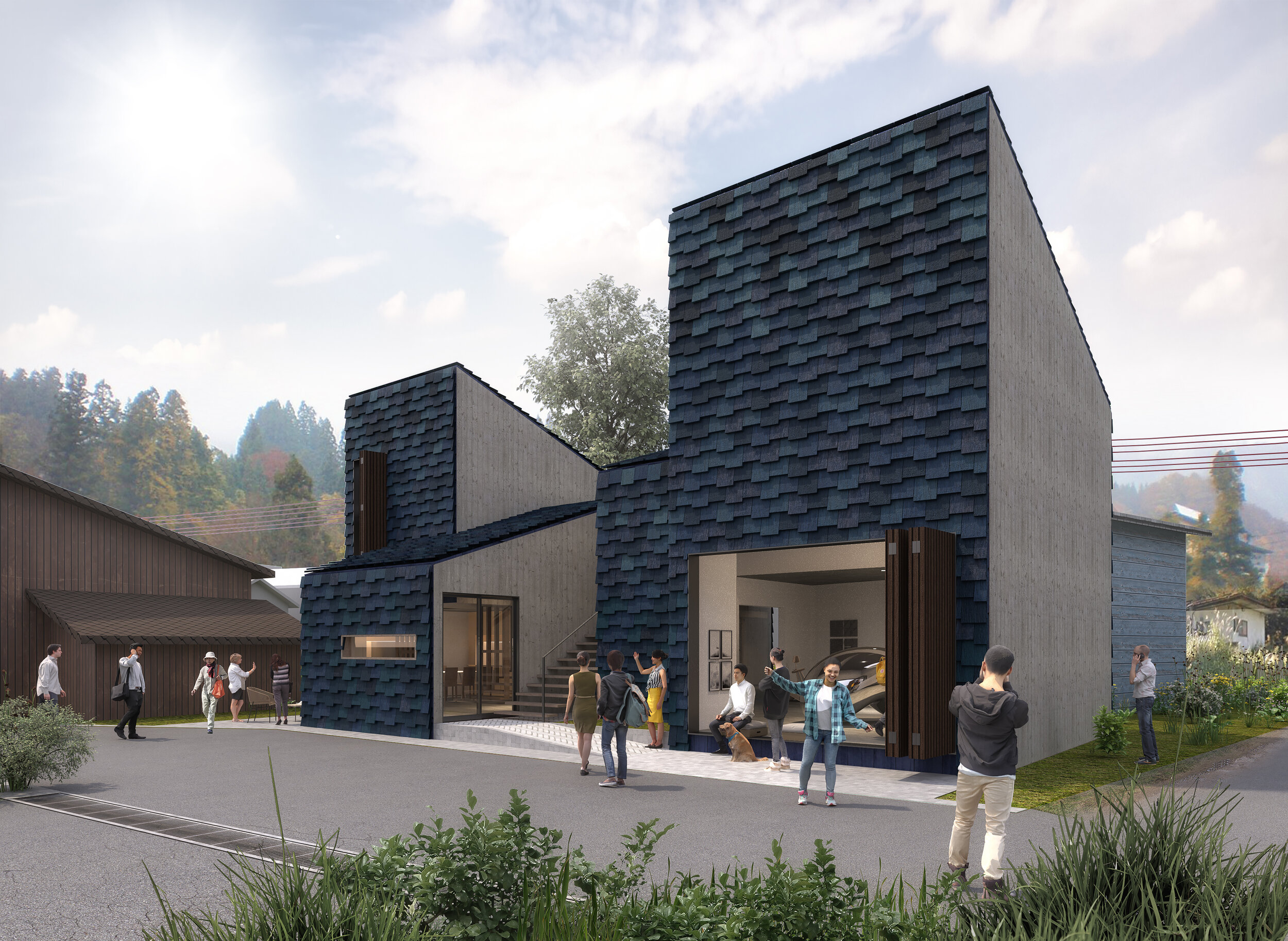
Indigo Stays
When tradition dyes architecture in a new colour
Location
Japan
Typology
Architecture and Interior Design
Collaborators
Etain Ho, Francis Lam, Chloe Chow
The original biennial contemporary art exhibition, ‘La Biennale di Venezia,’ was held in Venice in 1895, as a pioneering form of art exhibition. Since then, the term ‘Biennale,’ or in this case, ‘Triennale,’ though a vocabulary from the Italian language, often denotes, even in an English context, a contemporary art exhibition that occurs a set amount of times a year; two for a Biennale, three for a Triennale. These exhibitions digress from the traditional form of art display that involves a set narrative and specifically curated artwork, and in turn encourage creating and displaying art in a more freeform and expressive fashion.
Designed as the Hong Kong House for the Echigo-Tsumari Art Triennale, 2018, Indigo Stays functions as both artist residence and exhibition space, amalgamating two seemingly separate purposes into one. The theme of ‘Indigo’ is a direct allusion to a version of the traditional Japanese art of indigo dyeing in the area where the triennale is hosted, i.e. Nīgata Prefecture. Though indigo dyeing might be a prominent symbol of Japanese artisanship, shown most commonly and notably in the kimono, this form of craft also has a history in Hong Kong, albeit being lesser known. This mutuality perhaps characterises best the concept of collaboration and expression in the triennale between Hong Kong and Japanese artists.
The blue wooden shingles that make up the facade of the house is hand-dyed, continuing the theme of Japanese craftmanship. With its delicate balance in its duality of function, the house becomes not only a space of privacy, but also of interaction and collaboration. Upon its realisation, the house becomes an art piece within the art triennale, and echoes the very values of this new form of art enjoyment.














